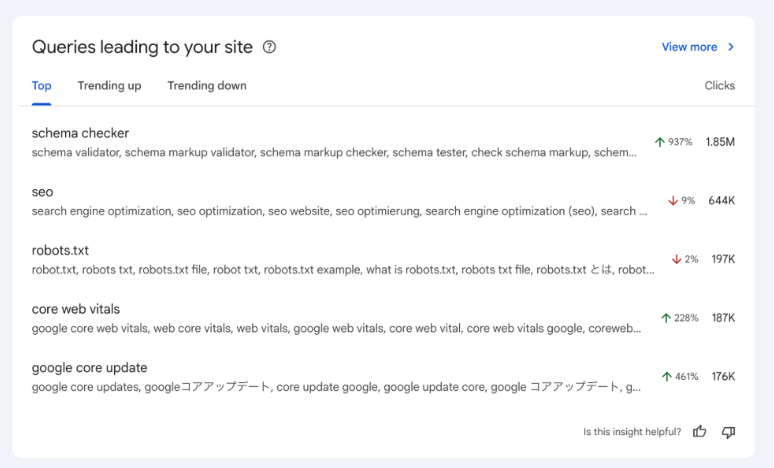Google Search Console Insights Now Adds Query Groups

Introduction
Google has introduced a new feature called “Query Groups” inside Search Console Insights — designed to help you make sense of endless keyword variations and uncover true user intent faster.
If you’ve ever spent hours trying to make sense of hundreds of near-identical queries (“schema validator,” “schema markup checker,” “check schema markup”), this update is for you.
What Are Query Groups in Search Console Insights?
Until now, Search Console showed a flat list of queries — useful but often cluttered. The same topic could appear in dozens of variations, each counted separately.
Now, Google groups similar search queries together based on AI-detected intent.
This means you’ll see a single group representing related queries instead of every individual variation.
Example:
For the topic “how to make guacamole dip,” Google might group:
How to make guacamole dip
guacamole dip recipe
easy guacamole recipe
simple guac dip recipe
All of these fall under one “Query Group” representing a shared intent.
Why It Matters for Marketers and SEOs
This might look like a small UI update — but it’s a big strategic leap for content analysis and SEO planning.
Here’s why:
✅ Cleaner insights: You can now understand true audience intent at a glance, not drown in duplicate variations.
✅ Better topic clustering: Helps identify which keyword families drive the most clicks.
✅ Content optimization: Know where one strong page can satisfy multiple related queries.
✅ Trend tracking: Identify rising topics faster with “Trending Up” groups.
How It Works
Google’s AI automatically clusters queries into groups and displays them inside the new “Queries leading to your site” card.
Each card has three tabs:
Top: Highest-performing query groups by total clicks.
Trending up: Groups gaining traction compared to the previous period.
Trending down: Groups losing momentum.
When you click on any group, you’re taken to the Performance Report, where you can explore individual queries in detail.
Real Example: Schema Checker Queries
Take a look at this real example from Google’s announcement 👇
Here, “schema checker” appears as a top-performing group, bundling similar searches like “schema validator,” “schema markup checker,” and “check schema markup.”
Instead of analyzing all those separately, marketers now get a single unified insight.

How to Use It for Smarter SEO Strategy
**Focus on Intent, Not Just Keywords:
**Use grouped queries to understand what users really want.**Create Topic Clusters:
**Each query group can represent a potential content cluster.**Spot Emerging Trends Early:
**Monitor “Trending up” groups to catch rising topics before competitors.**Optimize for Coverage:
**One page can now target all variations within a query group.
Final Thoughts
The new Query Groups feature is another step toward intent-driven SEO — where understanding why people search matters more than how they phrase it.
For SEOs, marketers, and content strategists, this means less clutter, more clarity, and faster decision-making.
🔗 Read the official announcement here: Google Developers Blog





